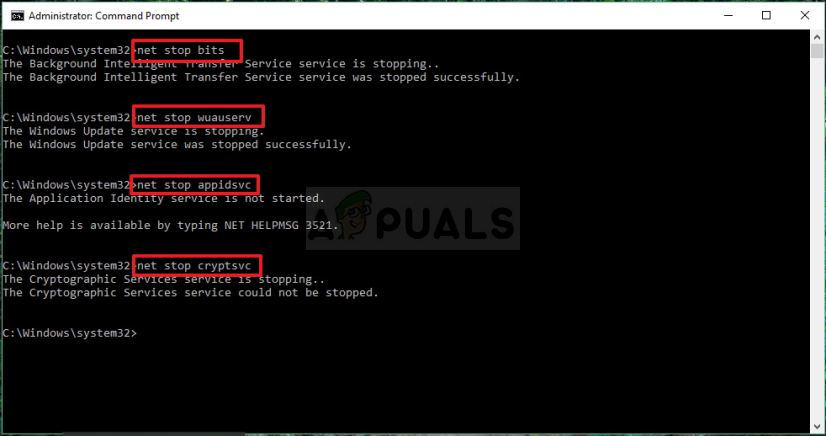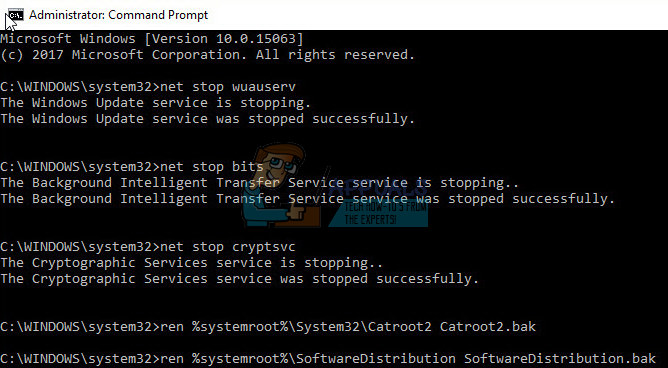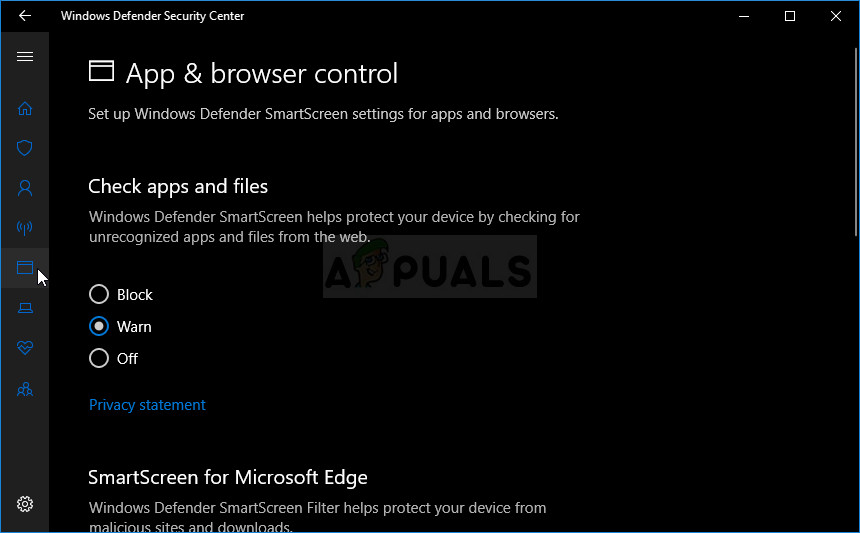Fix: This App has been Blocked for your Protection
This problem can occur with virtually any app on your computer and users were surprised to find out that they simply can’t run some of the apps which used to work normally, usually after an update. Even though the app you are trying to open may not be malicious at all, you still may receive this error without further explanation.

There are several methods which can be used to deal with this error message so make sure you try out all of them before giving up. Good luck!
Solution 1: Use the Hidden Administrator Account to Run or Install the App
You will need elevated administrator access to run or install the app properly. This account can be easily enabled by following the instructions below. When you successfully sign in into this account, you can modify, run or install the app and switch back to your regular account in no time.
- On the login screen, click on the Power icon and hold the Shift key while clicking restart. This is a great shortcut to accessing the Recovery menu without having to input your recovery DVD.
- Instead or restarting, a blue screen will appear with several options. Choose Troubleshoot >> Advanced Options >> Command Prompt and for your computer to open Command Prompt with administrative permissions.

- Copy and paste the following command in Command Prompt and click Enter afterwards. You should be able to see the “The command completed successfully” message in no time.
net user administrator /active:yes

- Log into this admin account by restarting your computer and choosing this hidden admin account. Please wait for a couple of minutes before everything is ready.
- This will enable you to run or install the app which is causing you problems while you are signed into this account.
- After you are finished with the hidden administrator account, you can disable it again by opening an administrative command prompt and typing the following command:
net user administrator /active:no
Solution 2: Use Command Prompt
This command which can be run in Command Prompt can help you use administrator privileges to try and run the app without having to enable the hidden administrator account. However, this method sometimes simply fails to work properly and that is why we have given advantage to the first method.
- Search for “Command Prompt” either in the Start menu or by tapping the search button right next to it. Right-click on the first option which appears as a search result and select the “Run as administrator” option. You can also use the Windows Key + R key combo and type in “cmd” in the Run dialog box. Click OK to run it.

- Copy and paste the command below and make sure you tap the Enter key on your keyboard after you do so. Also make sure to use the correct path to the file including its name. X is the placeholder letter as well; you should input the letter corresponding to the drive’s letter where the file is located.
"C:\folder1\folder2\PROBLEM_APP.exe"
- You should see the Operation completed successfully message. If you don’t check to see if you have input the file’s location correctly. If you have, try checking out other solutions below.
Solution 3: MMC.exe Causing the Error
If mmc.ece is the one causing the error with security prevention when you click on Install or Check for updates in the Settings app, one viable answer would be to simply reset Windows Update components which are closely related to the mmc.exe application. This may be a lengthy process but otherwise you won’t able to run anything related to mmc.exe without receiving the problem.
Since you are going to edit the registry, we recommend you check out this article in order to safely backup your registry to prevent further problems.
- Let’s proceed with the solution by closing the following services which are the core services related to Windows Update process: Background Intelligent Transfer, Windows Update, and Cryptographic Services. Disabling them before we start is very important if you want the remainder of the steps to perform without errors.
- Search for “Command Prompt” either in the Start menu or by tapping the search button right next to it. Right-click on the first option which appears as a search result and select the “Run as administrator” option. Copy and paste the command below and make sure you tap the Enter key on your keyboard after you do so.
net stop bits net stop wuauserv net stop appidsvc net stop cryptsvc

- After this, you will have to delete some files which should be deleted if you want to continue with resetting the update components. This is also done via Command Prompt with administrative privileges.
Del “%ALLUSERSPROFILE%\Application Data\Microsoft\Network\Downloader\qmgr*.dat”
- Change the name of the SoftwareDistribution and catroot2 folders. In order to do this, at an administrative command prompt, copy and paste the following two commands commands and click Enter after copying each one.
Ren %systemroot%\SoftwareDistribution SoftwareDistribution.bak Ren %systemroot%\system32\catroot2 catroot2.bak

- The following commands will help us reset the BITS (Background Intelligence Transfer Service) and the wuauserv (Windows Update Service) to their default security descriptors. Make sure you don’t modify the commands below so it’s for the best if you simply copy them because of their complexity.
exe sdset bits D:(A;;CCLCSWRPWPDTLOCRRC;;;SY)(A;;CCDCLCSWRPWPDTLOCRSDRCWDWO;;;BA)(A;;CCLCSWLOCRRC;;;AU)(A;;CCLCSWRPWPDTLOCRRC;;;PU) exe sdset wuauserv D:(A;;CCLCSWRPWPDTLOCRRC;;;SY)(A;;CCDCLCSWRPWPDTLOCRSDRCWDWO;;;BA)(A;;CCLCSWLOCRRC;;;AU)(A;;CCLCSWRPWPDTLOCRRC;;;PU)
- Let’s navigate back to the System32 folder in order to proceed with the final part of this method.
cd /d %windir%\system32
- Since we have completely reset the BITS service, we will need to reregister all of the files necessary for the service to run and operate smoothly. However, each of the files requires a new command in order to make it reregister itself so the process may end up being lengthier than what you are used to. Copy the commands one by one and make sure you don’t leave out any of them. You can find the complete list if you follow this link.
- The next thing we are going to do is reset Winsock by copying and pasting the following command back into the administrative Command Prompt:
netsh winsock reset

- If you are running Windows 7, 8, 8.1, or 10, at a command prompt, copy the following command in the Command Prompt window and tap the Enter key:
netsh winhttp reset proxy
- If all of the steps above have gone through painlessly, you can now restart the services you closed in the very first step by using the commands below.
net start bits net start wuauserv net start appidsvc net start cryptsvc
- Restart your computer after following through with all of the steps which are listed. Hopefully, you will now be able to go through with Windows Update without receiving the “This app has been blocked for your protection” error.
Solution 4: Let Apps Through in SmartScreen
This can be done via Command Prompt as you can operate just how will the message appear and what options will be presented to users who try and run the problematic app. Sometimes this error occurs because of certificate conflicts and Windows just doesn’t want to let it through.
However, if you really want to run the app and if you trust the developer, you can follow the instructions below in order to be able to run the app. The process differs for Windows 10 users and for older versions of the Windows operating system.
Older Versions of Windows:
- Open Control Panel by searching for it in the Start menu or by clicking the search button next to it. You can also use the Windows Key + R key combination in order to open the Run dialog box. Type in “control panel” in the box and click OK.

- After Control Panel opens, change the View by option to Category and click on System and Security. Once this section opens, locate the Action Center sub-section at the top of the window and click on it.
- Locate the Windows SmartScreen option by scrolling through the window. Click on the Change settings option. Note that you will need to have administrator permissions in order to do so.

- You will see three options: Require approval from administrator, Give a warning, and Turn off Windows SmartScreen. You can either choose the second or the third option as both of them should get rid of the error but it’s better to set the radio button to the second one in order to receive warning about some other possibly suspicious apps.
- Check to see if the problem is gone after confirming the changes and restarting your computer.

Windows 10 Users:
- Right-click on the shield icon on your taskbar and click on Open. This is to open the Windows Defender Security Center on your computer.
- When Windows Defender Security Center opens, locate the navigation menu to the right in order to locate SmartScreen. You will need to click on the browser icon which should be above the computer icon and below the radio tower icon.

- Under the Check apps and files section change the radio button from Block to Warn and check to see if the problem is gone.




